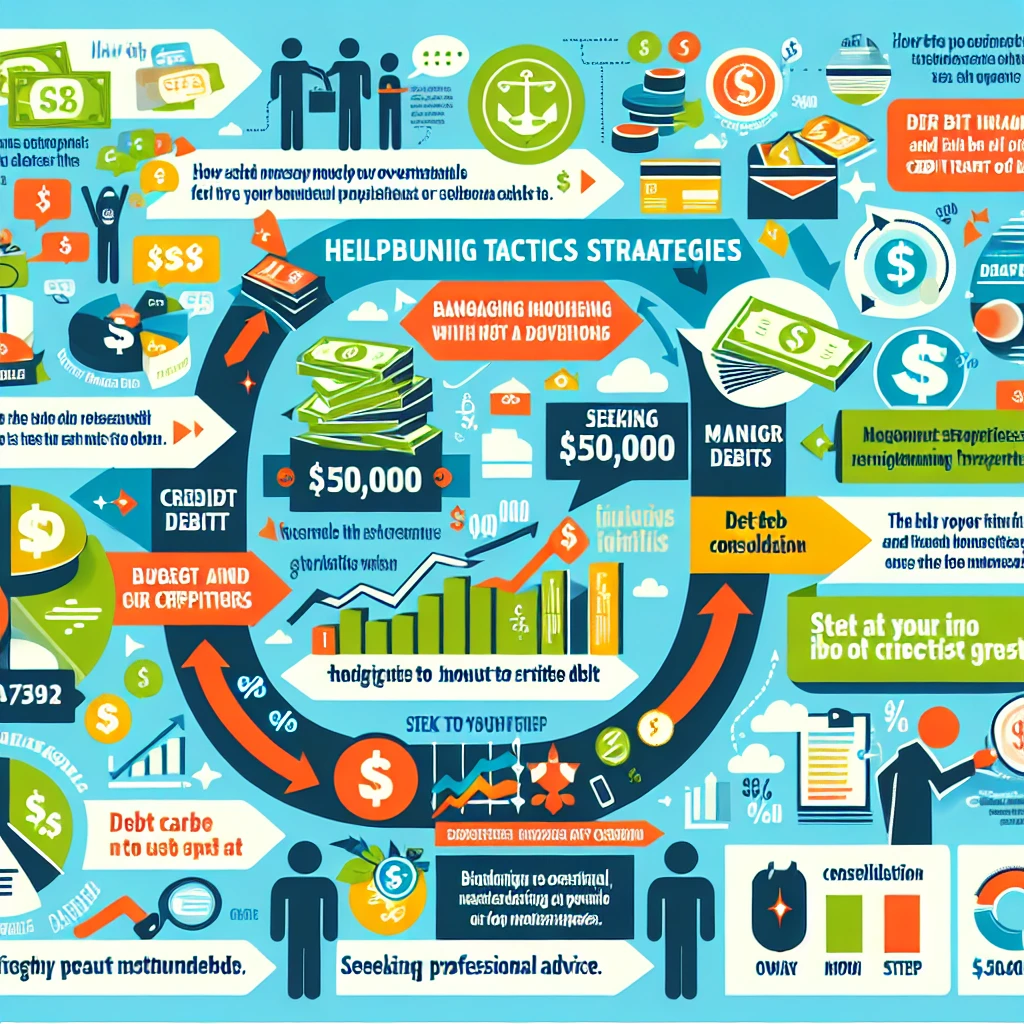KEY POINTS
- Establish a manageable debt repayment strategy.
- Monitor your credit to determine when to utilize options like balance transfer cards or personal loans.
- Alongside repaying debt, save money to prevent future financial burdens.
Credit card debt can often catch you off guard. Whether due to a job loss, a health issue, or a series of seemingly minor but ultimately impactful expenses, you might find yourself dealing with $50,000 in credit card debt, which can seem insurmountable. However, solutions are within reach.
Consider these three steps if you find yourself confronting a substantial debt load.
Develop a repayment strategy within your means
Facing $50,000 in credit card debt can be overwhelming, making it hard to know where to start. The key is to begin with a repayment plan that fits your budget, even if the progress feels slow.
One approach is the debt snowball method, which involves paying off debts from the smallest to the largest amount. This can be particularly motivating if you have one or two cards with smaller balances, as clearing these balances early can provide a psychological boost.
Alternatively, the debt avalanche method focuses on paying off debts in order of highest to lowest annual percentage rate (APR), allowing you to minimize interest payments.
Choose a method that aligns with your financial capacity. While it’s wise to cut unnecessary expenses, the pace of repayment should be one you can comfortably sustain.
Monitor your credit throughout the process
While your credit score might not appear critical when tackling $50,000 in credit card debt, tracking it offers significant advantages.
Firstly, you can witness the immediate benefits of your debt repayment efforts. Since credit scores reflect your total debt, reducing your debt should positively impact your score.
Secondly, a higher credit score can lead to savings on your credit card debt. For instance, you might qualify for a limited-time 0% APR balance transfer card, which, despite a balance transfer fee (typically 3% to 5% of the total transfer), offers a period without interest. Alternatively, a personal loan could provide lower interest rates for the remaining debt.
These financial tools often rely on your creditworthiness, with most lenders considering a score of 670 or higher as favorable.
Prioritize saving money
In the quest to reduce debt, it’s easy to neglect savings, channeling all extra funds toward repayment. However, this approach can leave you vulnerable to unexpected expenses, such as a flat tire or medical emergency, forcing you to incur more debt.
Even if you start by saving just $25 a month, maintaining a savings habit should be a priority until you’ve accumulated three to six months’ worth of essential expenses. For example, if your monthly necessities amount to $5,000, aim to save at least $15,000.
Eliminating $50,000 in credit card debt requires perseverance, resilience, and strategic planning. By crafting a feasible repayment plan and prioritizing savings, you can overcome this formidable challenge.




